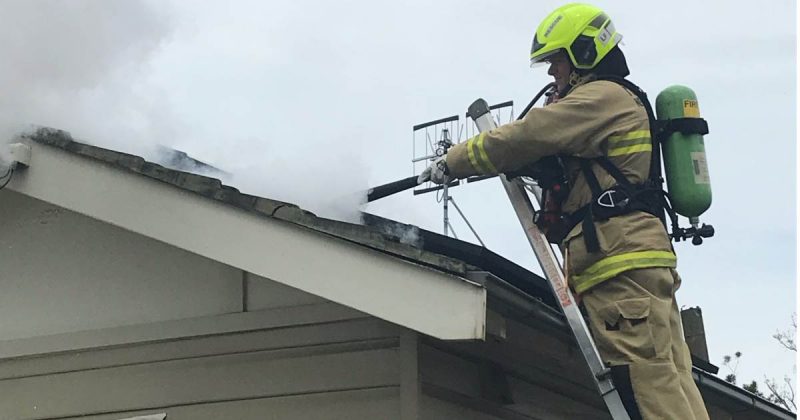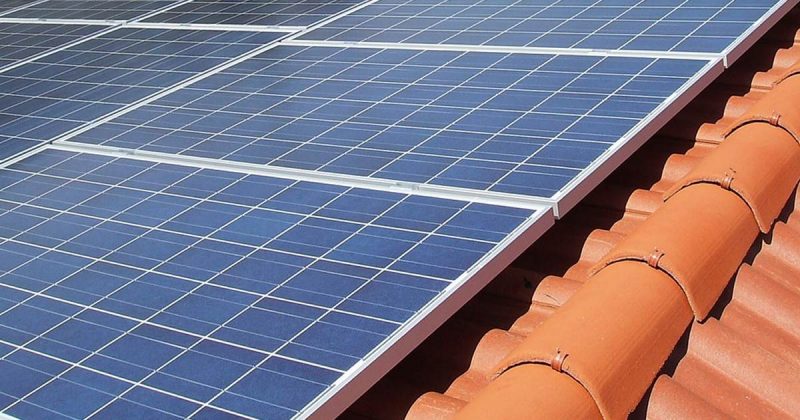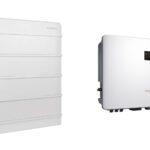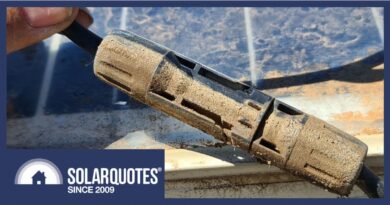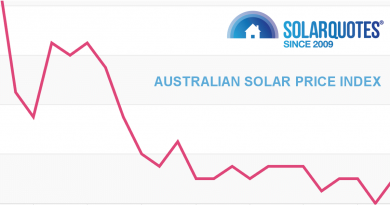A Deep Dive Into The Sungrow Battery Warranty — It Can’t Take The Heat

I read the Sungrow Battery Warranty so you don’t have to…
Could Bad Weather Kill Your Battery Warranty?
Home battery sales are growing, with around 47,000 Australian installations last year. One popular choice that won’t break the bank — but may still put a major dent in it — is from Sungrow. Their High Voltage SBR battery is competitively priced and, because it’s modular, provides from 9.6 to 25.6 kilowatt-hours (kWh) of storage. This article will be a deep dive into the details of its warranty.
While my co-blogger, Anthony, has mentioned some Sungrow batteries having problems, they still appear to be largely reliable and ahead of most of the competition on value for money. So much so that they won “Best Budget Battery” in our installer choice awards.
But beyond having a reliable battery, you also want a decent manufacturer warranty so you won’t have to worry if something goes wrong. For the most part, Sungrow provides this security, and for the most part, the warranty is good — except for one glaring error involving temperature. At least, I assume it’s an error. If it’s not, I’ll take back anything good I’ve ever said about Sungrow. In fact, I’ll also take back any neutral statements I’ve made, leaving only the bad.
I’ll explain how bad weather can — technically — end your warranty below. I’ll also cover:
- How the battery requires a hybrid solar inverter.
- How its kWh of battery storage and potential power output depend on the number of modules.
- Details of the warranty and how it will last most households a full 10 years.
- Warranty exclusions and conditions.
- How Australian consumer guarantees also protect you.
Basically, this article is choc full of useful details on the Sungrow battery and its warranty — as well as a big long rant on their stupid warranty mistake.
Hybrid Inverter Required
The Sungrow battery will require a compatible hybrid inverter and — for all normal installations — that will mean a Sungrow hybrid solar inverter. I briefly covered them in my deep dive into Sungrow inverters. There are two models:
- Single Phase: The 5 or 6kW SH5.0/6.0RS (Datasheet)
- Three Phase: The 5 to 10kW SH5.0/6.0/8.0/10RT (Datasheet)
Most homes have single-phase power and so will use an SH5.0RS or SH6.0RS. Homes with three-phase power can choose between using a single-phase or three-phase hybrid inverter. If a three-phase hybrid inverter is used, it can supply three-phase backup power and provide it from a single battery. There’s no need for three separate batteries as with some setups.
Sungrow inverters now have integrated Solar Analytics. This means you can get Solar Analytics monitoring without paying for hardware. You will need to pay for a subscription, but I highly recommend it unless you are absolutely skint or you are a “fire and forget” type of person and know you’re unlikely ever to use it.
Tip For Filling Your Roof With Solar
Because of the way the financial incentive for solar works, it normally only makes sense to install a solar panel capacity that is a maximum of one-third larger than the inverter capacity. But if you get solar and a battery installed simultaneously, it’s possible to go over this limit — provided the inverter allows it.
A Sungrow single-phase hybrid will allow panel capacity to be over twice its capacity, and the three-phase version will allow it to be 50% more. More solar panel capacity means more savings and solar energy is unlikely to go to waste if you have a battery.
Sungrow Battery — Energy & Power
The Sungrow battery is made of modules stacked on top of each other. There can be from three to eight of them, each providing up to 3.2kWh of usable storage when new, giving the following storage capacities:
- 3 modules: 9.6kWh
- 4 modules: 12.8kWh
- 5 modules: 16kWh
- 6 modules: 19.2kWh
- 7 modules: 22.4kWh
- 8 modules: 25.6kWh
Eight modules will be plenty for all but the most energy-hungry household, but if you still want more…

…up to four stacks can be connected in parallel, providing over 100kWh of storage.
The maximum amount of continuous power the battery can provide depends on how many modules are in a stack, ranging from 5.76kW up to 15.36kW. While this amount of power is impressive, in practice, it’s normally limited by the hybrid inverter’s output. For example, when supplying backup power, a single-phase 5kW Sungrow hybrid inverter will be unable to supply more than 5kW of continuous power.
The battery is High Voltage (HV), which is a change from Sungrow’s older, Low Voltage (LV) battery. This difference is important for installers, but for homeowners, the main difference is that HV batteries have more flexibility in their location. This is important for meeting Australia’s strict battery safety guidelines.
If you want more of the battery’s technical details, you can check out its datasheet.
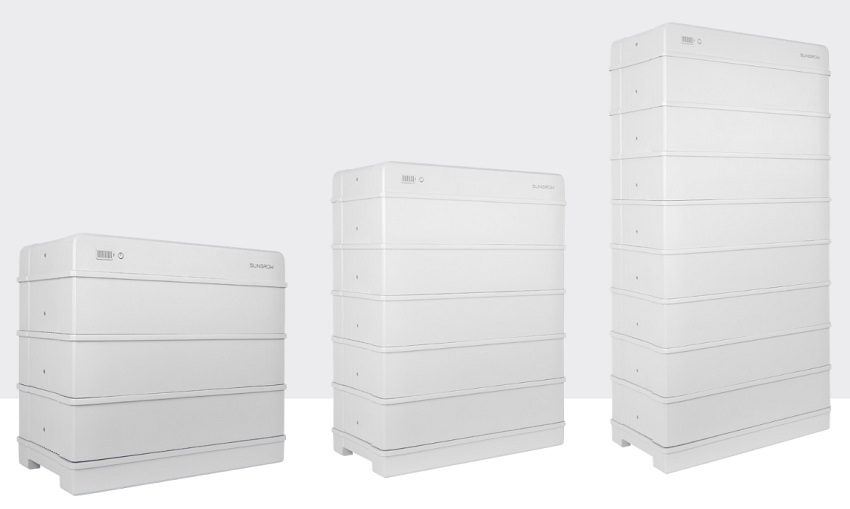
Sungrow batteries with three, five, and eight modules. The side the cables come out of is hidden. The big one on the right is 1.2m tall and weighs 279kg. The installation manual says they don’t need to be attached to a wall. (Image: Sungrow – Duh!)
Finding The Warranty
The Sungrow website is a nightmare to navigate, so I’ll tell you where to find the warranty. First, go to this warranty page. Then, under the heading “Warranty Terms and Conditions”, click on “HV Battery Warranty (10 Years)”, and it will appear below.
If you have an older LV SBP4K8 battery and want its warranty information, click “LV Battery Warranty (5 Years)”. It only has a 5-year product warranty but does have a 10-year performance warranty, so the length of its warranty coverage is not as bad as it may seem.
A 10-Year Warranty For Most Homes
The SBR battery warranty will last for 10 years or until it has supplied around 13,400kWh per battery module. This table from the warranty shows the exact amount of throughput it allows:
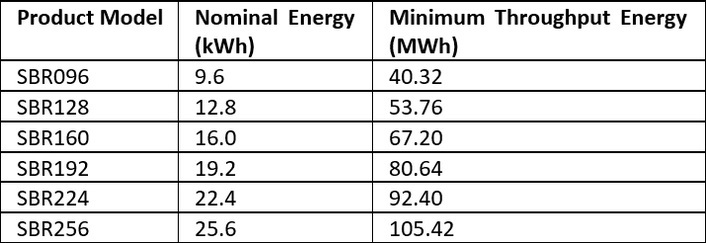
To convert MWh figures into kWh figures, multiply by 1,000. This will make 40.32MWh become 40,320kWh.
This means the warranty will last a full 10 years for all normal households. Only under unusual circumstances would a home use more storage throughput than permitted. If energy equal to its full usable capacity when new was discharged from the battery every day, it would take the following amounts of time to reach its limit:
- 3 modules with 9.6kWh of storage: 11.5 years
- 4 modules with 12.8kWh of storage: 11.5 years
- 5 modules with 16kWh of storage: 11.5 years
- 6 modules with 19.2kWh of storage: 11.5 years
- 7 modules with 22.4kWh of storage: 11.3 years
- 8 modules with 25.6kWh of storage: 11.3 years
As normal households average much less use than this, they are only likely to go over the limit if the battery is part of a VPP that works it hard, or if the owner uses it to buy and sell electricity on the wholesale market (and so often charges it from the grid).
I expected the amount of energy storage the warranty allows would be constant per module, but if you have more than six it actually drops by 2%.
60% Battery Retention
The warranty promises the battery will retain a minimum of 60% of its original capacity, either for 10 years or until its kilowatt-hour throughput limit is reached. This looks lousy compared to the Tesla Powerwall 2, which promises a minimum of 70% capacity retention. But it’s not as bad as it seems, because the Sungrow warranty allows for more energy throughput. Comparing them by looking at the amount of stored energy they can provide per kilowatt-hour of original capacity, gives the following:
- Tesla Powerwall 2: 70% retention after providing 2,800kWh of stored energy.
- Sungrow Battery: 60% retention after providing 4,200kWh of stored energy.
So the Sungrow warranty allows 50% more energy throughput than the Powerwall‘s at the cost of allowing one-third more capacity deterioration. To me, that looks like a good trade-off. If I only considered their warranties and no other information — all else equal — I would expect the Sungrow battery capacity to deteriorate slower than the Powerwall 2.
What Sungrow Will Do
According to the battery warranty, you can make a claim under the following two conditions:
- If the battery is defective due to material or workmanship for 10 years from installation.
- The battery can operate but fails to retain at least 60% of its original usable capacity while still under its throughput limit.
Under these circumstances, the warranty says Sungrow will…
“…provide the material (replacement parts or an equivalent replacement) via standard freight and standard service rebates to cover the labour costs of repair. Sungrow guarantees to provide a new or refurbished replacement, at its discretion, which performance is equal or higher than defective product.”
So Sungrow will provide either parts or a replacement and pay for labour. They can replace it with a second-hand refurbished unit, but say its performance will be at least as good as the original.
Provided Sungrow is still producing this battery model, they don’t give themselves the option of providing a refund based on how much warranty remains, as some manufacturers do. In my opinion, this is a good thing because these refunds are often miniscule.
If they are no longer producing it, the warranty says they can replace it with a similar product or refund, “…the remaining annually depreciated value of the purchase price of the Products…” So, if the battery breaks down after 8 years and they’ve stopped producing them, it’s possible they’ll only refund 20% of what you paid — not including installation.
Exclusions & Conditions
Like all warranties for complex and expensive electronic devices, a list of things will void the warranty. For the most part, they boil down to:
- It must be installed according to its installation manual (or user manual). It’s your installer’s job to get this right, so it pays to have a good installer. If you want to take a look, here’s a link to the user manual.
- The battery must be used normally without any hacking, modification, or unauthorized repairs.
- Sungrow won’t cover a damn thing that isn’t directly their fault.
There are a few conditions I’ll mention separately below, along with a huge problem the warranty has with Australian temperatures.
It Should Be Internet Connected
The warranty says, to make a claim…
“Sungrow requires access to the performance data and log history of the product over the internet to assess the battery’s condition.”
In other words, the battery should be connected to the internet. If not, you may be able to download this information and keep a record, but I recommend connecting it to the internet whenever possible to avoid problems. If you haven’t downloaded and stored the data, extracting it after the battery has turned itself into the functional equivalent of a stack of bricks will be hard.
It’s Non-Transferrable
Unlike some battery warranties, if you sell your home, you can’t transfer it to the new owner. The warranty is also void if you remove the battery from its original installation location, so you can’t take a warranted battery with you.
No Compensation For Not Doing Its Job
The warranty says Sungrow will not be liable for…
“…loss of use, loss of profits, loss of production, or loss of revenues.”
While the warranty may say that, under Australian Consumer Law you can still claim reasonable losses that occur due to the failure of a product.
It Can’t Take The Heat
If you look at its datasheet, the Sungrow battery appears to be an excellent choice for Australian conditions because its given operating temperature is from -20 to 50°:

The coldest recorded temperature in any capital is -10° in Canberra, so the lower range isn’t a real problem in Australia. We also haven’t had temperatures reach 50 degrees in any capital (although it’s definitely on the cards over the next 10 years).
But, there is a serious problem that starts with the warranty requiring you to follow the installation manual. If not, the warranty will be void. Under “Installation Environment Requirements” it states…
“The ambient temperature must be always between 0°C and 45°C.”
Here’s a screenshot from the installation manual as proof. I guarantee it’s not a deepfake.
So the datasheet says its operating temperature is between -20 and 50° but the installation manual — which must be followed for the warranty to apply — says the ambient temperature must always be between 0° and 45°.
I wasn’t expecting the Sungrow warranty to turn into a load of fetid dingo kidneys, but it managed to pull it off.
You can’t put a good operating temperature range on a datasheet but then say the warranty doesn’t apply if the product isn’t kept within a far more restricted range that’s tucked away inside the installation manual. That’s bloody unacceptable.
The Weather Can Kill Your Warranty
Now if you thought that pile of dingo kidneys was awfully fetid, brace yourself, because it gets worse.
The warranty is at the mercy of the weather.
The temperatures given in the installation manual aren’t an operating range. They are ambient air temperatures. If the temperature where the battery is installed goes below zero or above 45°, then the manual requirements weren’t followed, and your warranty is void. As batteries are normally installed outside, this is a serious problem.
The temperature has dropped below zero in every capital city except Darwin, where freezing is considered to be the point where jelly shots set. Here’s a list of capital temperatures when they were at their maximum brass monkeys:
- Brisbane: -0.1°
- Adelaide: -0.5°
- Hobart: -2.8°
- Melbourne: -2.8°
- Perth: -3.4°
- Sydney: -8°
- Canberra: -10°
Not as many capitals have gone over 45° but I’m sure the list will grow over the 10 years a Sungrow battery warranty is supposed to last:
- Sydney: 45.8°
- Melbourne: 46.4°
- Perth: 46.7
- Adelaide: 47.6°
In these days of global roasting, you could have a Sungrow battery installed in December anywhere in Australia and then be hit with a heatwave in January that will — technically — cause you to lose your 10-year warranty through no fault of your own.
Sungrow Is Likely To Fix This
I’m fairly certain Sungrow has no intention of pissing off customers in its largest overseas home battery market by declaring the weather has rendered their warranties void. So, the good news is that the temperature range given in the installation manual on their website was probably a mistake. After all, it contains other gems such as…
“Remove batteries and other ignition sources from the scene of a fire.”
Good luck with that. It weighs at least 114kg and has securely connected cables that lack slack. You could try to remove the modules separately, but unbolting them in an emergency won’t be fun.
It doesn’t make sense for a company that worked to build a good reputation and generally follows Australian consumer law to intentionally screw over customers this way. But they do need to fix this.
Consumer Guarantees
In case you’re still a bit worried, you always have the fallback of Australian Consumer Guarantees. These protections apply regardless of what written warranties say and cannot be removed by companies. While I’m no lawyer, I am very confident they’d apply if the temperature where your battery was installed dipped below zero or exceeded 45°. If you sell a battery that can be installed outdoors in Australia, you can’t refuse to support it if it gets exposed to normal Australian temperatures.
Also, under Australian Consumer Guarantees, you can claim for reasonable losses resulting from a faulty product. Having higher electricity bills, caused by not being able to use your battery, seems like a reasonable claim to me. But I wouldn’t bother to make a claim if an issue with my battery was resolved quickly. I’d cut them a bit of slack.
Making A Claim
If you have a problem with your battery, you should contact your installer first. They accepted your money in return for a working battery system. But if they’re no longer around, you can directly contact Sungrow to make a warranty claim. To do this, you’ll need to provide proof of purchase and, if it’s not connected to the internet, you’ll have to provide them with a copy of…
“Battery log data including running information, error history and event record.”
Since it’s always possible for something to go wrong if you are keeping these records yourself, I’ll once again recommend connecting it to the internet if it’s an option.
A Good Warranty — Apart From The Whole Temperature Thing
Compared to other home battery warranties, Sungrow’s is mostly good. While it only promises 60% retention of its original capacity, the number of kilowatt-hours of throughput allowed is relatively good, especially in its price range. The company also clearly cares about reputation and generally follows Australian Consumer Law. Sungrow is also the world’s second-largest producer of inverters and seems to be financially healthy. This means it’s very likely to still be around in the future to honour its warranties.
The fly in the ointment — or perhaps dendrite1 in the battery cell — is the ridiculous 0-45° ambient temperature requirement in the installation manual that — technically — makes their warranty complete crap. But I’m sure this is a mistake that Sungrow will fix soon. Just how long this will take, I don’t know. These big companies can be slow to respond.
All in all, given the battery is competitively priced, generally reliable, and that Sungrow usually follows Australian Consumer Law — I’d say it’s one of the better-value batteries available.
Footnotes
Original Source: https://www.solarquotes.com.au/blog/sungrow-battery-warranty/
